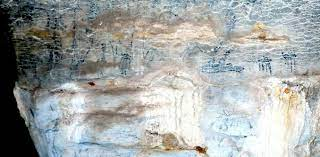Unique, prehistoric rock art drawings have been discovered in the Andriamamelo Cave in western Madagascar.
Unique, ancient shake art illustrations have been found in the Andriamamelo Cavern in western Madagascar.
I was component of a group that found and explained these old prizes. They're the first really pictorial art, portraying pictures of nature with human-like and animal-like numbers, to be seen on the island. Until recently, shake art in Madagascar had just produced a couple of websites with basic signs.
The remarkable discoveries included several shocks, consisting of mean some amazing social links.
First, scenes depicted sometimes connected relatively straight to Egyptian spiritual themes from the Ptolemaic duration (300-30 BCE).
Second, various other inferences from signs and writing on the wall surfaces revealed links to the Ethiopian and Afro-Arab globes.
Finally, common symbology and themes stimulated a two-millennia-old cavern art design from Borneo.
An extra world of shocks: at the very least 3 vanished pets of Madagascar (believed to have been vanished for many centuries) may be depicted - a huge sloth lemur, elephant birds and a huge tortoise.
It has lengthy been thought - and proof has verified - that individuals, language, and society of Madagascar are rooted in far-off old links to Borneo, an island in south-east Australia or europe, combined with solid influences from continental eastern Africa.
However, that the first Malagasy were, when they arrived, and what they did after that, are all hotly debated subjects.
However our searchings for are speculative, any information that may be originated from the Andriamamelo Cavern proof is of significant rate of passion to the restoration of Malagasy very early background.
Our research team - consisting of Malagasy researchers from local organizations, and American, British and Australian experts - visited the website close to the town of Anahidrano on the north-west side of the 17,100-hectare Beanka protected location in 2013.
Our group invested several days tape-taping the pictures, checking and mapping the whole cavern, looking for associated historical sites, and interviewing local citizens regarding the art. It took several years, however, to explore appropriate literary works and gallery archives to verify the originality and importance of what we'd found.
We made electronic duplicates and hand-drawings of 72 cave-art objects. These were attracted black pigment and consisted of 16 pets, 6 human forms, 2 human-animal crossbreed forms, 2 geometric designs, 16 instances of an M-shaped symbol, and many various other patterns and indistinct forms.
Egyptian links are hinted at in 8 significant pictures, consisting of a falcon (Horus); the bird-headed god Thoth; the ostrich siren Ma`at and 2 human-animal numbers which were just like Anubis - an old Egyptian god usually depicted as a guy with a canine
going
.



